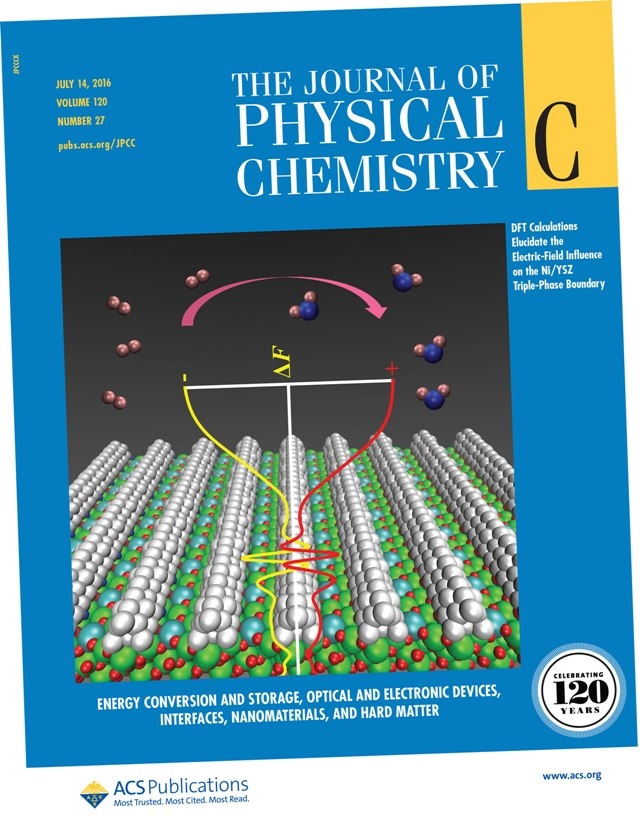Jul 19 2016
A team of researchers from Washington State University have established a primary step to enhance solid oxide fuel cells (SOFCs), a potential clean energy technology that has struggled to obtain wide commercial acceptance.
 Washington State University research improving solid oxide fuel cells appears on the cover of the Journal of Physical Chemistry C. (Photo Credit: Journal of Physical Chemistry C)
Washington State University research improving solid oxide fuel cells appears on the cover of the Journal of Physical Chemistry C. (Photo Credit: Journal of Physical Chemistry C)
The researchers designed an approach to enhance one of the essential failure points for the fuel cell, overcoming primary issues that have impeded its acceptance. The cover of the recent edition of Physical Chemistry C journal features this research.
Fuel cells provide a clean and exceptionally effective technique to directly convert chemical energy in fuels into electrical energy. They are identical to batteries as they consist of an electrolyte, anode, and cathode and generate electricity, however they use fuel to produce a steady flow of electricity.
Fuel cells can be around four times more effective than a combustion engine as they are based on electrochemical reactions, however researchers still find it hard to build them at low-cost and effectively enough to contend with conventional power generation sources.
An SOFC is composed of solid materials, and the electricity is produced by oxygen ions traveling through the fuel cell.
In contrast to other types of fuel cells, SOFCs do not need costly materials such as platinum. They are capable of working with several kinds of fuels, such as diesel fuel or gasoline.
A carbon-based material tends to develop in the fuel cell and hinder the conversion reaction when gasoline is used for fuel. Other chemicals, such as sulfur, can poison and hinder the reactions.
In their work the WSU researchers, enhanced comprehension of the process that halts the reactions. Issues regularly happen on the anode’s surface, known as the triple-phase boundary, where the anode interfaces with the fuel and electrolyte.
The researchers established that an electric field present at this boundary can prevent failures and enhance the performance of the system. In order to correctly capture the complexity of this interface, the team used the supercomputer at the Center for Nanoscale Materials, Argonne National Laboratory to carry out the calculations.
The researchers investigated same kind of problems in solid oxide electrolysis cells (SOECs), which are similar to fuel cells that function in reverse to transform carbon dioxide and water to transportation fuel precursors.
Jean-Sabin McEwen, assistant professor in the Gene and Linda Voiland School of Chemical Engineering and Bioengineering, head of the project said that the research provides guidance for the industry to gradually decrease poisoning and material buildup, enhancing the performance of SOECs and SOFCs.
The research was funded partly by the American Chemical Society Petroleum Research Fund.
The research matches with WSU’s Grand Challenges, a set of research initiatives focused on large societal issues. It is especially applicable to the challenge of sustainable resources and its subject of energy.